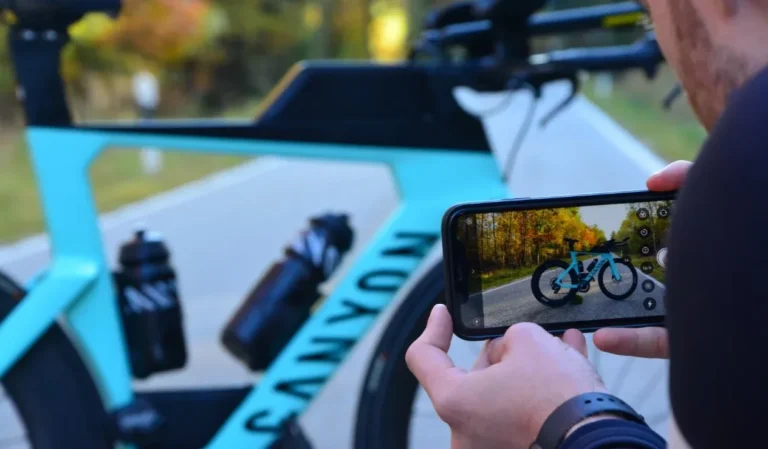Welcome to our review of triathlon wheels! If you’re in the market for a new set of wheels for your triathlon bike, you know that the options can be overwhelming. There are countless brands, materials, depths, and widths to choose from, and it can be tough to know which wheels are the best for your needs. That’s where we come in. In this article, we’ll review some of the top triathlon wheels on the market and provide you with the information you need to make an informed decision.
We’ll look at the performance, durability, and value of each set of wheels and provide our recommendations based on our experience and research.
Whether you’re a seasoned triathlete or just starting out, we hope this article helps you find the perfect wheels for your triathlon bike.
ELITEWHEELS Road Bike Carbon
Won: Best value for money
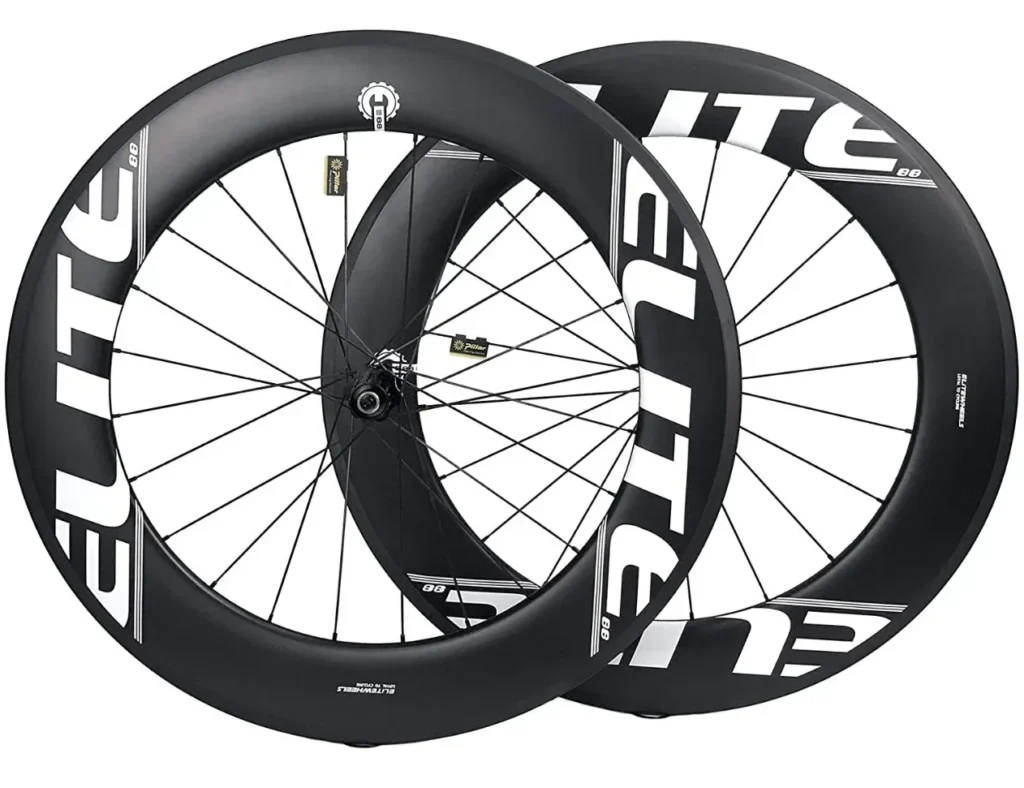
Review
The ELITEWHEELS Road Bike Carbon Wheels are a good value, as it is difficult to find similar wheels in the $400 price range. The overall weight of the wheels (without quick-release levers) was 1733g, which is close to the advertised weight of 1754g. The braking is smooth, and the hubs feel solid. These wheels are compatible with tubeless tires and can easily be installed using the supplied tape. They accommodate 25mm width tires, which are the optimal width for maximum aero benefit on these rims. The wheels feel stable and solid while riding but can be a little unstable in strong crosswinds over 20 – 30 mph. Overall, these wheels perform Wall in most conditions.
Superteam Carbon Fiber Road Bike Wheels
Won: Best lower-cost option (389 USD)
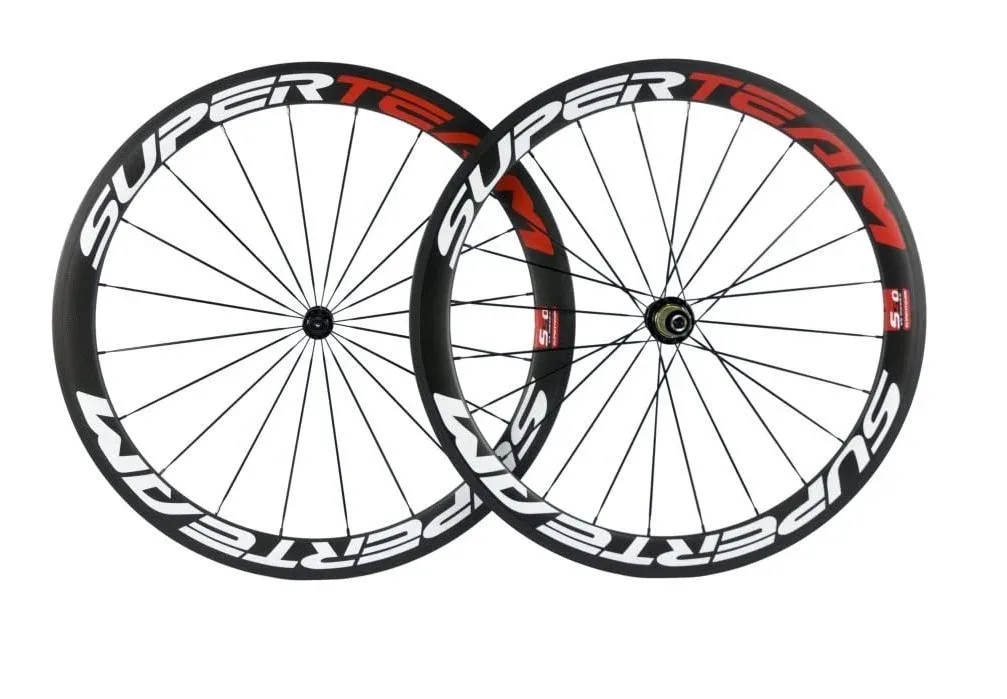
The install
The wheels were straight when they were received and it was easy to install them. However, it took some time and multiple attempts to adjust the brakes because the rims were wider than the previous ones, which caused brake rubbing on the first trial run and during a long ride the next day. It’s important to be thorough when adjusting the brakes if you’re installing these wheels yourself.
The wheels
The new wheels have a very smooth ride and are an improvement over the previous set of Alex 28mm rims. This may be partially due to the wider tires being used, although the gatorskin tires tend to have a rougher ride compared to supersport tires. The wheels also feel fast, although it’s difficult to determine if this is just a psychological perception or if there is a measurable difference in speed.
Fulcrum Speed 55
Won: Best wheels for racing
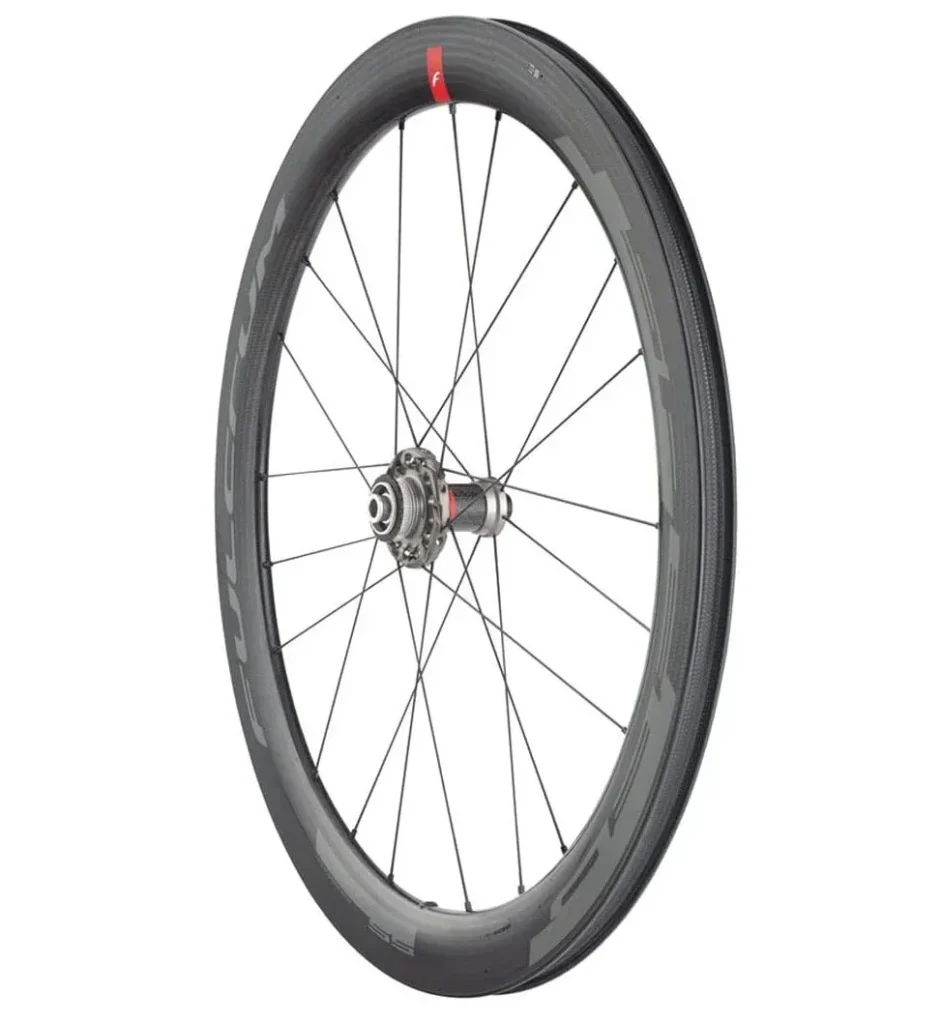
Review
The Speed 55 DB wheelset has Fulcrum’s “2-Way Fit” system, which is designed to work with either tubeless or tube tires due to precise engineering in the valve area. The wheels have a 19mm internal width and an asymmetrical spoke pattern with 21 spokes at the front and rear for improved balance and stiffness. They have USB ceramic bearings for a smooth ride and the freehub makes a quiet whistle. When you increase power, the engagement is quick and the wheels are stable in windy conditions. The front wheel would work well with a rear disc wheel for faster rides. Although they are not inexpensive, the ride experience is refined for the price.
Superteam 38/50/60/88mm Carbon Wheelset
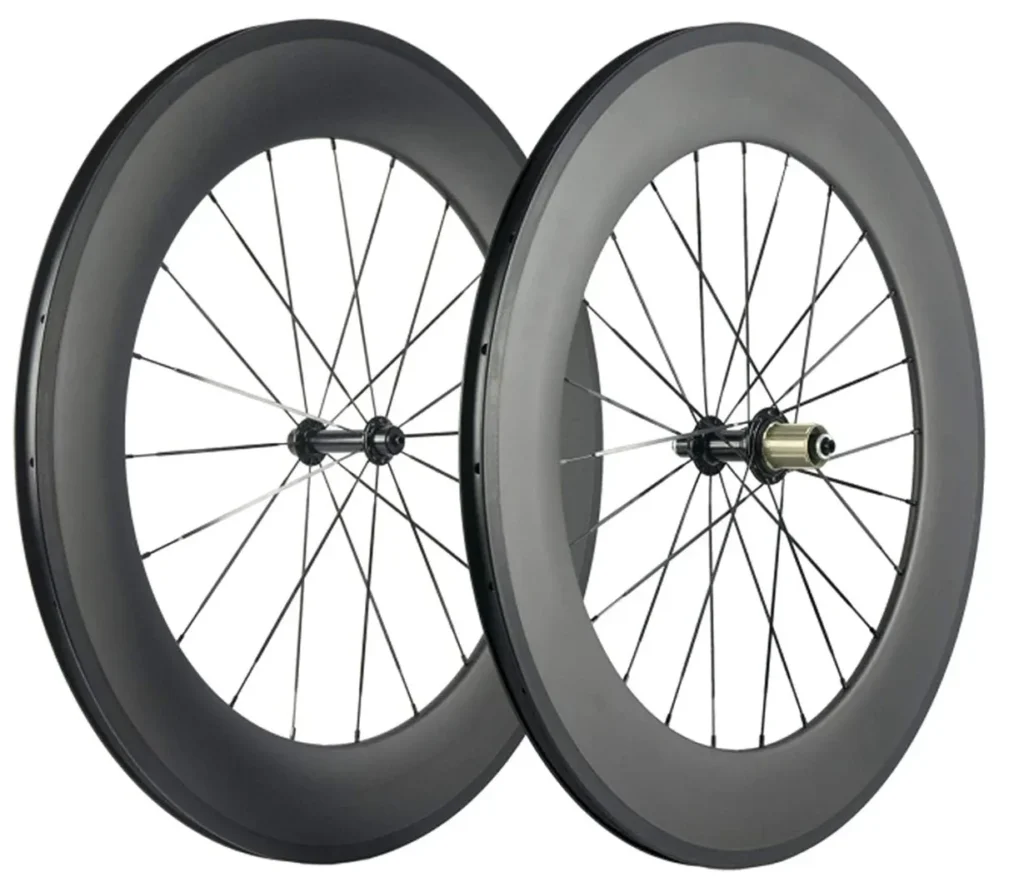
Review
Installing the cassette was challenging since I had never done it before, but I managed to figure it out. I really liked the clicking sound the hub made, which was like a loud cicada bug and helped alert pedestrians of my presence. The 88mm wheels made my bike more aerodynamic and I could tell the difference right away. The wheels also made a whooshing sound, but when I went over bumps, they made a thudding sound which made me think something was loose. Overall, these wheels are impressive and a good value for the price, aside from the thudding sound when going over bumps.
Q&A: Triathlon wheels
In this Q&A section, we will explore the different types of triathlon wheels, their benefits and drawbacks, and provide some tips on how to choose the best wheels for your needs. Whether you are a seasoned triathlete looking to upgrade your equipment or a beginner looking to get started in the sport, this Q&A will provide valuable information to help you make informed decisions about your triathlon wheels.
What size wheels are on a triathlon bike?
The wheels of triathlon bikes are normally 700c, which are the same size as road bike wheels. The most popular size for road bikes and triathlon cycles is 700c, which refers to the wheel’s diameter. Some triathlon bikes might also come with 650c wheels, which have a little smaller diameter and might be a viable choice for riders with very short statures. It’s vital to remember that the wheel size can change depending on the particular bike type and the rider’s preferences. It’s usually a good idea to confirm the size of the wheels on a certain triathlon bike by speaking with the manufacturer or seeking advice from a bike expert.
What rim depth do pros triathletes use?
It is difficult to say exactly what rim depth professional triathletes use, as different triathletes may prefer different rim depths based on their personal preferences and the specific demands of the race they are competing in.
In general, deeper rims (40mm or more) can provide an aerodynamic advantage by reducing drag and helping the rider maintain a higher speed. However, deeper rims can also be heavier and may not handle as well in crosswinds. shallower rims (20mm or less) are generally lighter and may handle better in crosswinds, but may not provide as much of an aerodynamic advantage.
Ultimately, the best rim depth for a professional triathlete will depend on the specific needs and preferences of the individual athlete and the demands of the race they are competing in.
What wheel depth for triathlon?
The best wheel depth for a triathlon will depend on a variety of factors, including your personal preferences, the specific demands of the race, and your riding style.
In general, deeper wheels (40mm or more) can provide an aerodynamic advantage by reducing drag and helping the rider maintain a higher speed. However, deeper wheels can also be heavier and may not handle as well in crosswinds. Shallower wheels (20mm or less) are generally lighter and may handle better in crosswinds, but may not provide as much of an aerodynamic advantage.
When choosing a wheel depth for a triathlon, it is important to consider the course and conditions of the race, as well as your own strengths and weaknesses as a rider. For example, if you are a strong climber and the race features a lot of hills, you may want to opt for a lighter, shallower wheel to help you maintain your climbing speed. On the other hand, if the race is flat and fast, a deeper wheel may provide a greater aerodynamic advantage.
Ultimately, the best wheel depth for a triathlon will depend on your individual needs and preferences, and it may be helpful to try out a few different options to see what works best for you.
Do triathlon race wheels make a difference?
Triathlon race wheels can make a difference in a number of ways. The right wheels can help you achieve a faster ride by reducing drag and improving aerodynamics, which can be particularly important in a long-distance race like a triathlon. In addition, the right wheels can also help you handle better in different conditions, such as crosswinds or rough roads.
That being said, it is important to note that triathlon race wheels are not a one-size-fits-all solution, and the right wheels for one rider may not be the best choice for another.
The best wheels for a triathlon will depend on a variety of factors, including the specific demands of the race, your personal preferences, and your riding style.
Why do TT bikes have disc wheels?
Disc wheels can provide an aerodynamic advantage by reducing drag and helping the rider maintain a higher speed. Disc wheels are also generally more stable in crosswinds than other types of wheels, which can be particularly important in a time trial race where maintaining a straight line is crucial.
Overall, while disc wheels can provide some benefits in a time trial race, they may not be the best choice for every rider or every race. It is important to consider your own needs and preferences when deciding whether a disc wheel is right for you.
Are disc wheels allowed in Ironman?
Yes, it is generally allowed to use disc wheels in Ironman triathlon races. However, it is important to note that Ironman has specific rules and regulations regarding equipment, and it is the responsibility of the athlete to ensure that their equipment meets these requirements.
According to the Ironman official rules, “wheels must meet the requirements of the UCI (Union Cycliste Internationale) or the ITU (International Triathlon Union) and must not offer any unfair advantage over other competitors.”
In general, disc wheels are allowed in Ironman races as long as they meet these requirements and do not offer any unfair advantage over other competitors. However, it is always a good idea to check the specific rules and regulations for the Ironman race you are participating in to ensure that your equipment is compliant.
